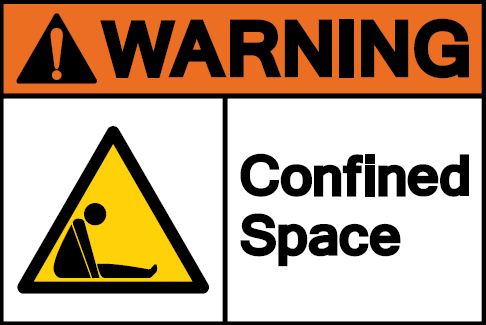
Working in confined spaces may pose inherent dangers. OSHA regulations help ensure employers take effective steps to mitigate or eliminate these dangers.
OSHA revised its confined space regulations for general industry (Standard 1910.146) in 1994, but some believe the standard didn’t fit well for construction projects. In 2015, OSHA introduced more stringent regulations designed specifically for the construction industry: the Confined Spaces in Construction standard (1926SubpartAA).
Although the new standard resembles the old one in some ways, there are several key differences. There has been some misunderstanding around the newer standard and when it applies. So… which one is for you? Let’s review two common points of confusion.

General Industry or Construction Industry?
The original standard was intended for general industry, which meant all industries that are not agriculture, construction or maritime. The new construction standard applies to those employers performing construction work – industrial, commercial or residential.
Some employers in heavy industrial settings may think that because their work is industrial in nature, they should conform to the general industry standards. That is incorrect. “Industry” does not mean “industrial.” OSHA intended for general industry standards to be applicable at any place of commerce, worksite or business.
Construction or Maintenance?
What are the differences between construction and maintenance activities, and why is this important? Contractors doing construction work in confined spaces are required to follow 1926 AA. Those performing maintenance tasks may follow 1910.146. The key is determining which standard is appropriate for a given job. How is an employer to make the distinction?
In a letter clarifying the difference between maintenance and construction activities, OSHA defined construction work as “construction, alteration and/or repair, including painting and decorating.” It defined maintenance as “keeping equipment working in its existing state, i.e., preventing its failure or decline.”
The distinction can be explained with this analogy: Suppose you’re working in a confined space and pull out of that space a leaking valve. If you replace that bad valve with a new but identical valve, that would be considered as maintenance. However, if the replacement valve is made of more durable material, with improved stems and gates, OSHA would consider that construction. The new valve is similar in function but improved in technology.
There’s another caveat. If a maintenance project requires contractors to perform complex, large-scale work, OSHA considers it construction. If any of that work is done in a confined space, Standard 1926 AA would apply.
By way of example, in a project in Louisiana, when a contractor discovered that some of the beams in the structure lacked the required fireproofing coating, the contractor opened up parts of the wall, removed the bad beams and replaced them with appropriate beams. Although they were pulling one thing out and replacing it with a like item, OSHA would consider it construction because of the complexity or the degree of difficulty of the task.
To help clear up confusion about the Confined Space in Construction standard and when it applies, OSHA has created an FAQ page. Neither this article nor the OSHA FAQ page is a substitute for seeking expert advice on OSHA standards. Consulting experts regarding confined spaces, trench safety and the applicable regulations regarding the specific circumstances of the job to be performed is always the best practice.
Bruce Magee is a trench safety expert at United Rentals. With 39 years in the rental industry, the last 25 in Trench Safety, Bruce has delivered 380-plus Competent Person classes. He has presented on Trench Safety/Confined Space Safety requirements across North America.